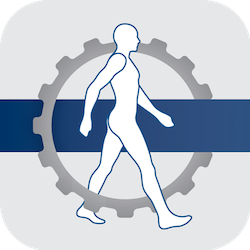Step into the New Year with Confidence: The Truth About High Heels and Your Foot Health
As the Christmas party season kicks off and the New Year’s celebrations approach, many of us are reaching for our favourite pair of high heels. They’re elegant, stylish, and often the go-to choice for festive occasions. But as we step into this season of sparkle and cheer, it’s worth taking a moment to understand what those high heels might be doing to your body—and how to keep yourself comfortable, confident, and injury-free.
What Happens When You Wear High Heels This festive Season?
High-heeled shoes (HHS) are a holiday staple, but they place your body in a unique biomechanical situation. Here’s what happens:
Your Ankle Is Put to Work High heels keep your ankle in a permanently plantar-flexed position (ankles tipped downward and toes pointed, which reduces its ability to provide a strong, efficient push-off as you walk. The result? Your lower leg muscles, like the calf muscles, are placed in a shortened, less effective posture.
Your Body Compensates When your ankles can’t do their job efficiently, your knees and hips step in to help. This means more work for the muscles in your thighs and hips, which have to generate extra power to propel you forward. While your legs might feel like they’ve had a workout after a night out, this isn’t always a good thing—it can lead to overuse injuries over time.
Redistribution of Workload High heels shift the focus of your walking mechanics from your feet and ankles to your knees and hips. This is known as distal-to-proximal redistribution, and while it keeps you moving, it also increases the risk of strain and pain in these areas, especially with frequent wear.
How Does This High Heel Wearing Affect You During the Festive Season?
With parties, dancing, and long nights standing in heels, your body might feel the effects more than usual. Common complaints include:
Knee Pain: Increased knee flexion and power generation in heels can strain the joint over time.
Hip Discomfort: Your hips have to work harder, especially during early and late phases of walking, leading to fatigue and soreness.
Balance Challenges: High heels elevate your centre of gravity, making it harder to stay stable—especially after a glass of bubbly!
Ankles Rolling: with all the force of your heel bone gaining onto a smaller area the pronation and supination roll of your ankle will be exaggerated putting more strain on your ankle ligaments and maybe even spraining them!
Tips to Stay Comfortable and Safe in Heels
Choose Wisely Opt for lower heels or wedges, which reduce the stress on your ankles and knees. Look for cushioning and support to minimise discomfort. This is a great tip if your are not a regular high heel wearer!
Alternate Your Footwear If you know you’ll be on your feet all evening, bring a stylish pair of flats to switch into once the dancing starts. Your knees and hips will thank you.
Stretch and Strengthen Regularly stretch your calves, strengthen your hips, and work on your balance to counteract the effects of wearing heels. A podiatrist can guide you through exercises tailored to your needs.
Take Breaks Sit down whenever possible, and don’t hesitate to remove your heels for a few moments to let your feet recover.
The Bigger Picture: Long-Term Health
If high heels are a staple in your wardrobe, it’s important to be mindful of the long-term effects on your musculoskeletal health. Over time, frequent heel use can lead to:
Reduced ankle mobility.
Increased risk of knee osteoarthritis.
Pain and discomfort in the hips and lower back.
At our clinic, we specialise in podiatry biomechanics and can help you find ways to enjoy the glamour of heels without compromising your health keeping your ankles mobile and reducing your risk or arthritic feet through physical therapy and exercises.
Step into the New Year Pain-Free
This festive season, let’s keep you moving comfortably and confidently. Whether you need advice on footwear, exercises to alleviate discomfort, or a personalised assessment of your walking mechanics, our podiatry biomechanics clinic is here to help.
Book an appointment and make this the year you prioritise your foot health without sacrificing your style. Because every step you take—whether barefoot or in heels—should feel amazing.
Happy Holidays! ✨
Reference
Buddhadev HH, Suprak DN, Jordan KH, Hynds A. Walking in high-heel shoes induces redistribution of joint power and work. Int Biomech. 2023 Dec;10(1):10-17. doi: 10.1080/23335432.2023.2228362. PMID: 37356107; PMCID: PMC10291901.

